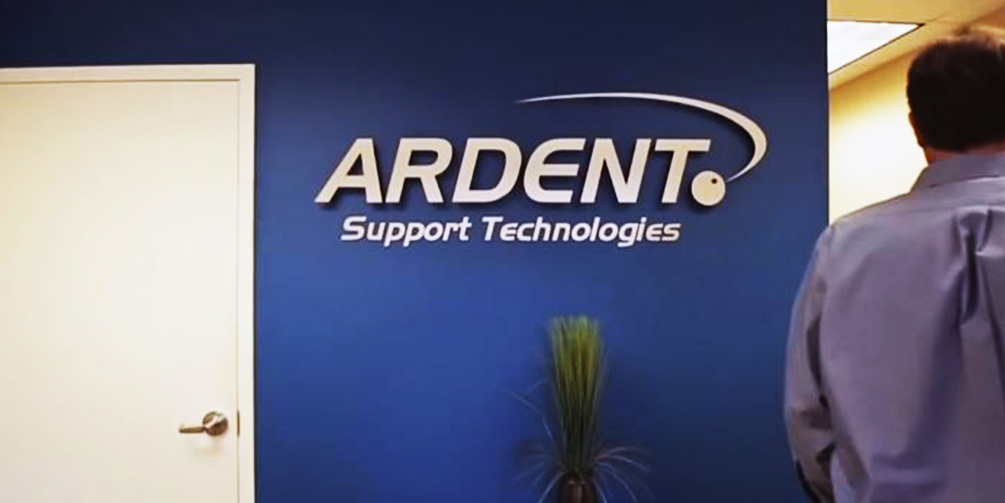The IT industry research leader, Gartner, recently published a paper on the third party maintenance market (TPM). This was just the most recent sign that TPM is a growing force in the industry. We sat down with Matt St. Jean of Ardent Support Technologies, which was named as a top “disruptor” in the TPM space to learn more about where TPM is headed and how it can help enterprises of all sizes.

Q: Matt, what is driving the increased interest in third party maintenance (TPM)?
A: For a long time, it was all about end of support life, the point when the original equipment manufacturer will no longer provide parts or service for a particular product model. The OEMs use this strategy to compel upgrades, but it’s not necessarily in the customer’s best interest.
IT organizations became resistant to living according to someone else’s schedule. The economic downturn, for example, had a large effect. Many companies needed to squeeze more life out of their existing systems until the markets turned around, but they couldn’t afford downtime or exorbitantly priced spares, either. They needed help finding the sweet spot where hardware returns the maximum value on the investment, but doesn’t hang around so long it becomes more trouble and cost than it’s worth.
We got really good at helping clients develop the most cost-efficient way forward and then providing high-quality, lower cost support to follow it through. Once it became known that this approach works, interest picked up even as the economy recovered.
Q: Are there reasons, other than end of support life, that are attracting customers to TPM?
A: There’s also been disenchantment with the OEMs’ service. A lot of people automatically think of the OEM as the best option for maintaining a piece of hardware. It’s the brand name after all. But many OEMs aren’t providing their own support service. Take Cisco, for example. Their contracts are extremely expensive, but they’re outsourcing service delivery to their partners.
This can create problems. The partners are generally authorized to provide Level 1 and 2 support, and Level 3 requests go back to the OEM. To keep costs down, however, the OEMs reward partners that make minimal use of OEM engineering resources. That’s bad for customers because many support providers will put strong deterrents in place to prevent customers from reaching Level 3 support, even when it’s clearly needed.
So customers are paying more than necessary but getting less service than they should. At Ardent, we wanted to turn that concept on its head, so customers pay less and get more. Our model is 100% Level 3 service. There’s no escalation procedure, and certainly no access barriers.
Although our model means we invest more in each engineer, we’re more efficient. As a result, we not only slash support costs 40% to 70%, clients find that our approach saves staff time and delivers better results because they are consistently working with more experienced, knowledgeable engineers.
 Recommended: MapR: Convergence Drives Enterprise Agility
Recommended: MapR: Convergence Drives Enterprise Agility
Q: I see that Gartner, in its TPM Competitive Landscape 2016 Report, cited Ardent as a disruptor. Why?
A: Gartner described Ardent as “high touch” and that gets to the heart of the matter. Whereas some competitors are trying to automate more and more, we’re combining our integrated online portal with personalized service when it matters.
It’s common sense—there comes a point when an IT shop’s most knowledgeable engineer needs to speak directly with Ardent’s best expert on the affected system. Sometimes that’s going to result in us going on site, but a lot of times the customer just has a question or needs some troubleshooting help. The customer’s staff person is valuable and has a lot of competing priorities, so the support process needs to be as seamless, rapid, and successful as possible. That’s what we do.
Q: What difference does the right IT maintenance and support partner make?
A: It’s like the difference between an insurance policy and a full-service solution. Most OEM and TPM providers are really selling insurance. The best case scenario for an insurance company is to provide a product no one uses. It’s a fast way to profits, but customers don’t fall in love with their insurance company. Their reactions are along the lines of an old Chris Rock comedy bit: “I pay for insurance in case something happens. If something doesn’t happen, shouldn’t I get my money back?”
We don’t want Ardent clients to feel that way, so we offer more than component coverage and spare parts. We come to every client site and do a full systems analysis, and we incorporate in every contract extra time that clients can use to get help with issues that fall outside of the usual break-fix. Going with us is a lot like adding a top-tier engineer to the in-house team.
We think that approach is working in our favor. Customers aren’t just turning to us to swap out the occasional failed drive. They stick with us because they know they can pick up the phone or email us and get a quick, accurate answer to a configuration question or whatever else they need.
Recommended: Code Valley – Industrializing The Software Industry
Q: Who is your ideal customer and why?
A: It’s hard to say whether we have an ideal client. We work with organizations of all sizes, from relatively small enterprises with only a handful of systems all the way up to the Fortune 500. So what do organizations like Lockheed Martin, Diamond Foods, the U.S. Marine Corps, Harvard Management and Genomics have in common? Operationally, maybe not much. But in terms of wanting to achieve maximum ROI on hardware investments without driving up the total cost of hardware ownership—they all like solutions that deliver on these fronts.

Q: How does the cloud affect you?
A: As with anything new, people tend to think that the cloud will result in the end of the status quo. The Gartner study you mentioned did find that cloud is having an impact, but it’s not what many would think. Some non-core functions are moving toward a public cloud environment. But outside the small business market, where owners are eager to get rid of the IT headaches altogether, most organizations are keeping many systems on site. For example, hosting a large quantity of rarely accessed but sensitive compliance-related data can be done more cost-efficiently on site—and it needn’t be on the latest storage appliance, either.
IT is heading in a hybrid cloud direction. You can look at archival systems, but also the Fast IT model. IT may not be provisioning as many internal systems for quick turnaround, prototype projects—that can be more easily obtained via the cloud. But once technologies become part of the company’s core competency, they want to truly own them and bring them in house.
Stability becomes very important in this context, and CIOs are saying that want to keep on-site systems in place for longer. These are just examples, but they show how the cloud computing trend is actually increasing, not eliminating, the demand for TPM. And that’s just what Gartner found.
Recommended: CensorNet – Unified Cyber Security Solution For Ultimate Control
Q: How would you advise someone looking at TPM?
A: Go with Ardent! [Laughs.] Seriously, one thing I’d take a hard look at before signing on is the provider’s level of focus. We’re starting to see a lot of secondary hardware resellers getting into the TPM business. In many cases, the customer is going to end up right back where they were with the OEM—outsourced, unresponsive support combined with too much hardware sales pressure.
By contrast, those companies that get at least 80%—and at Ardent it’s 100%s—of revenues from TPM concentrate on customer service. These providers tend to rank in the top tier of support vendors.



